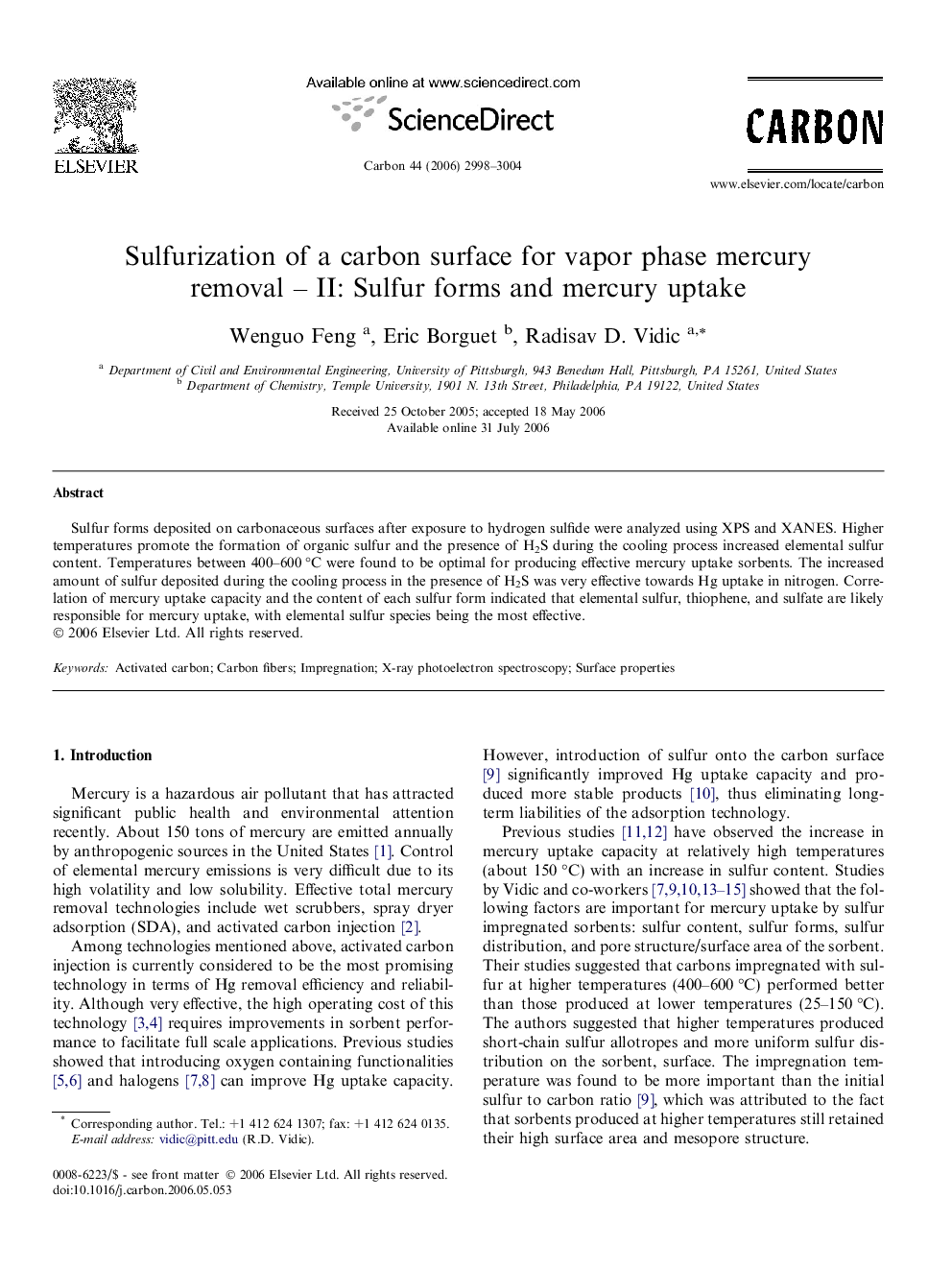| Article ID | Journal | Published Year | Pages | File Type |
|---|---|---|---|---|
| 1419207 | Carbon | 2006 | 7 Pages |
Abstract
Sulfur forms deposited on carbonaceous surfaces after exposure to hydrogen sulfide were analyzed using XPS and XANES. Higher temperatures promote the formation of organic sulfur and the presence of H2S during the cooling process increased elemental sulfur content. Temperatures between 400–600 °C were found to be optimal for producing effective mercury uptake sorbents. The increased amount of sulfur deposited during the cooling process in the presence of H2S was very effective towards Hg uptake in nitrogen. Correlation of mercury uptake capacity and the content of each sulfur form indicated that elemental sulfur, thiophene, and sulfate are likely responsible for mercury uptake, with elemental sulfur species being the most effective.
Keywords
Related Topics
Physical Sciences and Engineering
Energy
Energy (General)
Authors
Wenguo Feng, Eric Borguet, Radisav D. Vidic,
